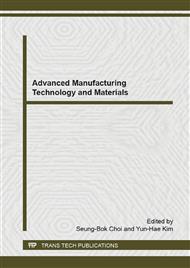p.181
p.185
p.190
p.194
p.198
p.202
p.206
p.213
p.219
Self-Cleaning Characteristic of the Insect (Lepidoptera) Wing Surfaces
Abstract:
The microstructure, hydrophobicity, adhesion and chemical composition of the butterfly and the moth wing surfaces were investigated by a scanning electron microscope (SEM), a contact angle (CA) meter, and a Fourier transform infrared spectrometer (FT-IR). Using ground calcium carbonate (heavy CaCO3) as contaminating particle, the self-cleaning performance of the wing surface was evaluated. The wing surfaces, composed of naturally hydrophobic material (chitin, protein, fat, etc.), possess complicated hierarchical micro/nanostructures. According to the large CA (149.5~156.9° for butterfly, 150.5~155.6° for moth) and small sliding angle (SA, 1~3°), the wing surface is of low adhesion and superhydrophobicity. The removal rate of contaminating particle from the wing surface is averagely 88.3% (butterfly wing) and 88.0% (moth wing). There is a good positive correlation (R2=0.8152 for butterfly, 0.8436 for moth) between particle removal rate and roughness index of the wing surface. The coupling effect of material element and structural element contributes to the outstanding superhydrophobicity and self-cleaning performance of the wing surface. The wings of Lepidoptera insect can be potentially used as templates for biomimetic preparation of intelligent interfacial material with multi-functions.
Info:
Periodical:
Pages:
198-201
Citation:
Online since:
January 2015
Keywords:
Price:
Сopyright:
© 2015 Trans Tech Publications Ltd. All Rights Reserved
Share:
Citation:



